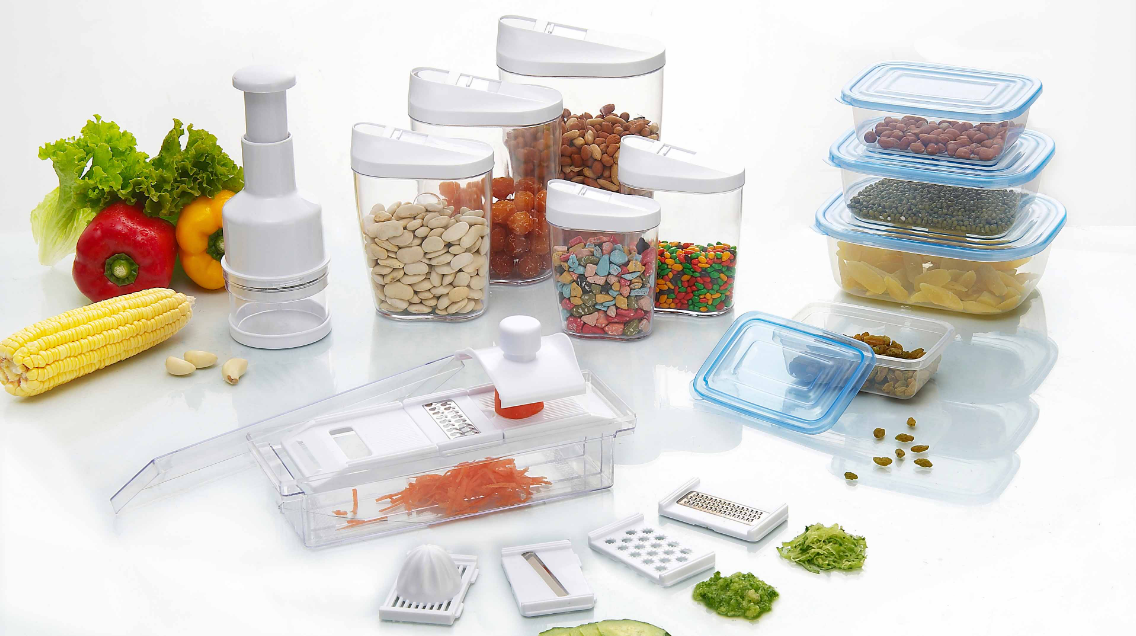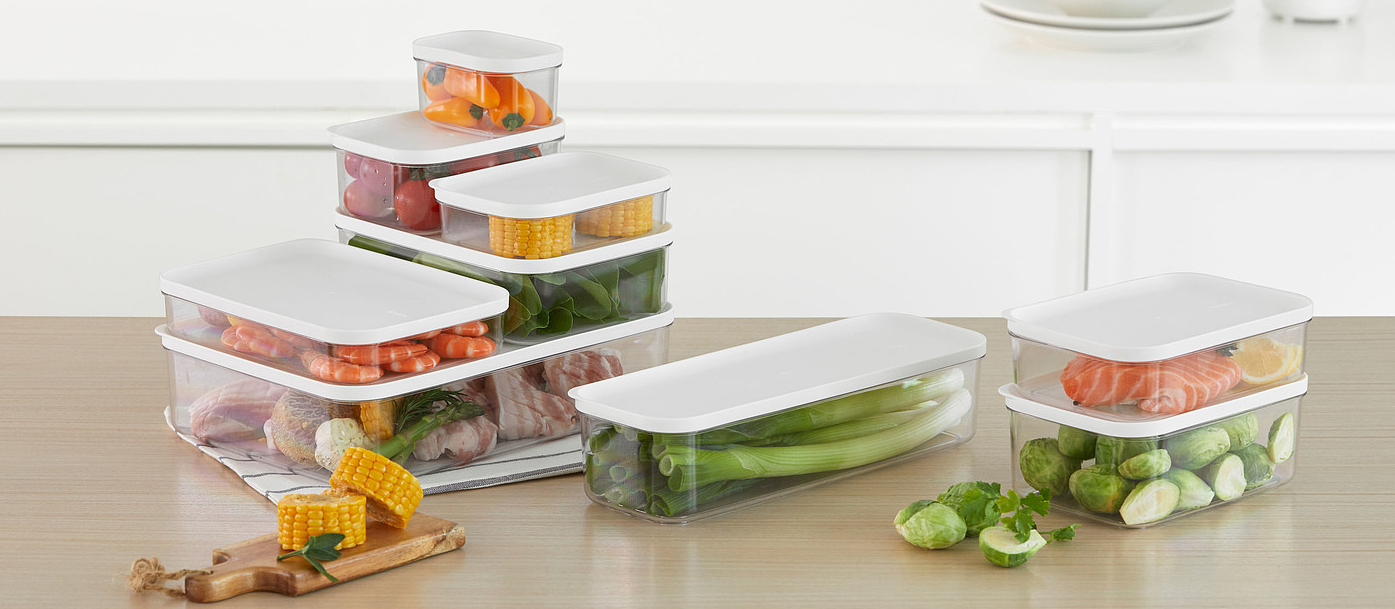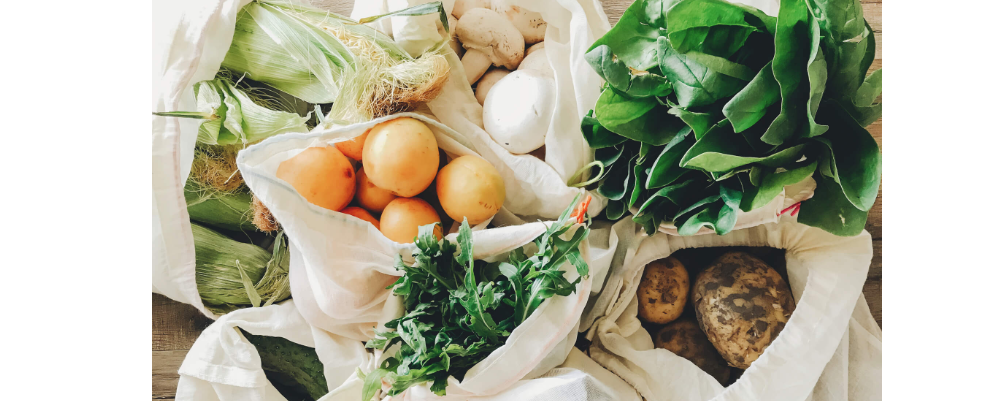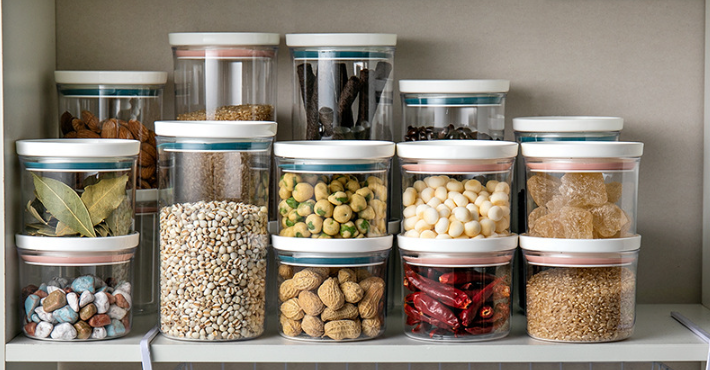What you store your food in matters. Most food storage containers are made of plastic. But research has suggested plastic is harmful to your health and the environment. Instead, try one of these food storage options that are healthier and more sustainable choices.
One of the best ways to ensure you’re eating healthfully is to prepare your own food at home. And preparing healthy food at home often means leftovers. Having a variety of food storage containers on hand ensures that the food stays fresh and doesn’t go to waste. But food storage containers aren’t always made of the healthiest or most sustainable materials. In fact, some of them can be downright dangerous.

Most modern kitchens are stocked with plastic bags, wrap, and food storage containers (including water bottles). But that wasn’t always the case. Before plastic wrap, most people would wrap perishable foods in paper. Or sometimes they would place them between two plates in the refrigerator. As for fresh fruits and vegetables, they would store them on the counter, in root cellars, or preserve and can them in glass jars for extended use.
Plastic wrap was first invented in 1908 by Jacques Brandenberger, a Swiss engineer. He later sold the American rights to Dupont who developed moisture-proof cellophane that was useful for food preservation. Tupperware and its corresponding “home parties” also popularized plastic storage containers in the late 1940s. And in the 1960s, Dow Chemical introduced the Ziploc bag to grocery stores, changing the face of school lunches everywhere.
But although plastic wrap, bags, and containers were lighter, less breakable, and more convenient, they came with a price.
Plastic food storage containers and bags aren’t exactly environmentally friendly. Most types of plastic come from natural gas or crude oil, which are nonrenewable resources. Their manufacturing process also requires a large amount of energy and emits over nine million tons of methane and volatile organic compounds (VOCs) into the air each year.
And even though plastic is sometimes recyclable, not all food storage containers are made of the kinds of plastic that can go into recycling bins. Sadly, the majority end up in landfills or, worse yet, the ocean.
According to the EPA, “14.7 million tons of plastic containers and packaging were generated in 2015, approximately 5.5% of MSW [municipal solid waste] generation.” And plastics can take over 400 years to fully break down, becoming smaller pieces in the process that also end up in waterways where they can damage sea life.

Starting in the 1940s and 50s, plastic food storage containers were made with BPA (bisphenol A). Although food companies knew it leached into food, at the time, they weren’t required to prove that the chemical exposure was safe. It wasn’t until the 1990s that research showed how toxic this compound was to human health.
Unfortunately, by that time, the damage had already been done. BPA was found to be an endocrine disruptor, contributing to chronic diseases and conditions like obesity, type 2 diabetes, heart disease, asthma, cancer, infertility, low sperm count, liver problems, and ADHD.
As news started coming out about the dangers of BPA, many manufacturers began phasing this nasty chemical out of their products. At first, that seemed like a good thing. But then the National Institutes of Health-funded research on BPA-free plastics. They found that “almost all” commercially available plastics leach synthetic estrogens. This was true even when the plastics weren’t exposed to conditions known to unlock potentially harmful chemicals, such as the heat of a microwave or regular oven, the steam of a dishwasher, or the sun’s ultraviolet rays. According to this NIH-funded research, some BPA-free products released synthetic estrogens that were even more potent than BPA.
At this point, we simply don’t have reliably safe forms of plastic to use for food storage. If you need to use plastic containers, try not to store highly acidic foods such as tomato products in them. And never expose them to direct sunlight, put them in the dishwasher, or add hot foods to them.
Although these alternatives may not be 100% perfect, they’re still better choices for food storage compared to plastic.

A popular alternative to disposable kitchen wraps made of plastic, aluminum, or paper are beeswax wraps. Touted as a sustainable option, the wraps are long-lasting, washable and reusable, and even compostable after they wear out.
Essentially a beeswax wrap consists of cotton cloth coated in beeswax, jojoba oil, and tree resin. You can buy them pre-made or DIY by following this handy tutorial.
Although beeswax wrap can be a healthier and more sustainable food storage option, there are a few things to keep in mind. Since conventional cotton is almost always grown from genetically engineered seeds, it’s very likely to be contaminated by the excessive use of herbicides and other pesticides used with GMO crops. If that’s a concern for you, try to choose wraps, or cloth if you’re DIYing, made with organic cotton. Also, since beeswax comes from bees, who are currently in a world of trouble, look for waxes that come from a sustainable and vegan source (like this one). And if you do decide to make your own beeswax wraps, make sure the tree resin you purchase is food safe (like this one).
Another more sustainable alternative to plastic storage and produce bags are cotton produce bags. Unlike conventional plastic bags found in the produce or bulk foods section, cotton produce bags have a drawstring closure and flat bottom for easier use. As they’re made of cloth, the bags are also reusable and washable.
Cotton offers more breathability than plastic as well. While this can be good in some situations, food can get dried out by the fan in the refrigerator unless stored in a crisper drawer.
Like with the beeswax wraps, however, the most sustainable cotton produce bags will come from organic and fairtrade cotton. Fairtrade is particularly important with cotton. Buying fairtrade ensures the crop supports the local community and wasn’t sourced from child labor.
Since silicone is still made from plastics derived from fossil fuels, and cannot be recycled curbside, it’s not one of the most sustainable food storage options. But overall, it is a better choice than regular plastic. Silicone is typically regarded as safe by most experts, and it seems to last longer, too.
Silicone has not been shown to react with food or beverages or to release any toxic fumes when heated. However, I can’t recommend heating silicone since we’re not sure if it could still leach chemicals into food. And heating might degrade glues and binders that may be necessary when used as a sealing agent.
Silicone works very well as a lining right at the point of seal in glass and stainless steel food storage containers. If you do choose to use silicone containers, make sure you use “food-grade.”
For the safest food storage containers, choose items made from either glass or stainless steel.

Long accepted as a material for food storage and cookware, glass containers are nonporous, meaning they won’t absorb food odors or flavors. Containers made from glass won’t leach any chemicals into food or water since glass is chemically inert. Most types of glass are also microwave and dishwasher safe.
In terms of sustainability, glass gets high marks since it’s easily recyclable. And it’s made of naturally occurring silica (or sand), sodium carbonate (soda ash), calcium carbonate, and cullet (waste glass).
Most food-grade, glass storage containers also work in both high heat and cold temperatures due to tempered glass. However, always check with the manufacturer to ensure containers are safe to freeze. Even freezer-safe glass can crack as food expands. When using glass in the freezer, leave at least ¾” of space from the top.
Although glass works well for food storage, it doesn’t seal as well as some other types of containers. Canning jars have a better sealing design but can take at least an hour or longer, and special conditions, to fully seal. Glass is also breakable, and a relatively heavy material, and may not be the best choice for travel purposes.
When it comes to food storage containers, stainless steel takes the cake. Some stainless steel containers are leakproof and airtight with silicone-sealing, snap-on lids. Unless you have x-ray vision, you won’t be able to see what’s inside them, like you can with glass. But unlike glass, stainless steel won’t break or weigh down your backpack on a trip.
You also won’t have to worry about stainless steel contributing any chemicals to your food or water. It’s best not to store anything acidic in stainless steel containers for long periods of time, though, as the metals may begin to leach out.
Stainless steel is also easy to clean and is able to withstand both hot and cold temperatures with ease. Unfortunately, stainless steel is not microwave safe, but it can go on the stove or in a toaster oven (sans lid) and is dishwasher friendly. Since it’s a long-lasting metal, and highly resistant to corrosion, stainless steel reduces waste. It does tend to cost more, but since high-quality stainless steel can last for generations, in the long run, it may be the least expensive option.
Like glass, stainless steel is recyclable. In fact, most stainless steel products contain 60% recycled material. And although steel manufacturing uses a lot of energy, the industry’s energy consumption has actually been declining.